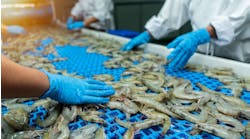“2018 sees us firmly in the age of digitalization. We have a tremendous amount of data, but it’s scattered everywhere.” Shell’s Janae Adams discussed the implementation of 80-in. Collaboration Station displays to spur interaction among refinery employees.
Shell’s Martinez refinery employs 700 people and sits on the bay near San Francisco. “We have pretty strict regulations. Not just California regulations, but also San Francisco Bay Area regulations,” said Janae Adams, process control engineer, Shell. “We’re also surrounded by tech companies, so we need to be creative to be able to afford to run the plant.”Adams spoke to attendees of her session, “Using visualization tools to drive the refinery of tomorrow,” at the Honeywell Users Group Americas conference this week in San Antonio.
At Shell Martinez, Honeywell’s Collaboration Station has been applied for over six months in a Level 4 (L4) operator field office, and for several years in an L3.5 secure staff room. “We’ll focus on the L4 application because it’s more interesting,” Adams said.
“2018 sees us firmly in the age of digitalization,” Adams said. “We have a tremendous amount of data, but it’s scattered everywhere. It’s hard to use scattered data in any facility, but this is also a highly secure plant, with the levels firewalled.” The Collaboration Station allows the refinery to view L2 and L4—process control data and general business information—at the same time and in the same location.
“This opens a lot of opportunities so, to narrow it down, we designed our installation for one department,” Adams said. “We were able to take a messy, scattered web of information and make it into a single, organized stack.”
At the same time, employees tend to work in silos, Adams noted. Finding and using data takes power and effort, so plants usually provide them personal computers. “This makes individuals productive, but it also makes collaboration hard,” Adams said. “So, we designed a single screen to replace multiple computers—a single, massive, 80-in. touchscreen so all can see, touch and interact with the same information at the same time. Every single person can contribute, and touching it makes the information come to life.”
Benefits and vision
The example Adams shared was the screen for a delayed coking operator. “The Collaboration Station streamlines the presentation to the operator, energizes them and shows them how we make decisions,” she said. “The operator navigates using dials, and the middle one accesses the L4 information.”
Benefits include being able to access mixed data “on all levels, with robustness,” Adam said. “It also replaced LCN-connected stations, which saved us money because they took a lot of maintenance.” The operator can connect with others through Skype, and the visibility improves operator training, which improves safety.
Adams’ team vision is to add searchable commentary and flags, to allow local operators to edit script, and to put the display information on a mobile phone or tablet to use in the field. They also want to allow two people to interact at the same time.
“Our other system is an older, L3.5 deployment for a technical team, for operations support and control engineers,” Adams added. It’s also on an 80-in. touchscreen and gives a refinery-wide overview with inter-unit flow rates and other information.
Next steps include adding a new Honeywell drill-down capability to the L3.5 installation, and rolling the L4.0 deployment to additional operator stations.






